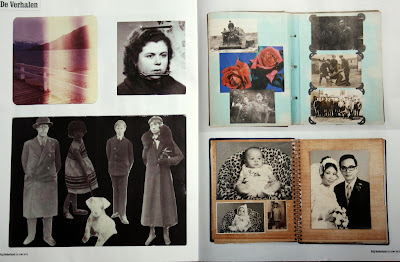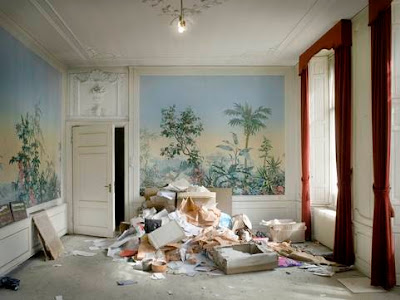The color portraits of the Dutch photographer combine the formal rigor of August Sander, the psychological depth of Diane Arbus, and the scale and crystalline detail of Netherlandish paintings. The Guggenheim surveys her career, from the pictures of swimsuit-clad teenagers that first earned her acclaim in the early nineties to recent videos of club-going youths and of schoolchildren in thrall to Picasso. June 29 to Oct. 3.
- Rineke Dijkstra, Vondelpark, Amsterdam, the Netherlands, June 10, 2005, 2005; chromogenic print; 59 5/8 in. x 70 1/16 in.; Courtesy the artist and Marian Goodman Gallery, New York & Paris; © Rineke Dijkstra
June 29, 2012 – October 3, 2012
The Solomon R. Guggenheim Museum presents the exhibition Rineke Dijkstra: A Retrospective, the artist’s first midcareer retrospective in the United States. The exhibition is co-organized by SFMOMA and the Solomon R. Guggenheim Museum, New York. This is the most comprehensive museum exhibition to date of the artist’s oeuvre, and the first major Rineke Dijkstra exhibition organized by an American museum. The exhibition features nearly 70 color photographs and five video installations, including two new video projections.
Dijkstra has revived and reexamined portraiture in contemporary art for the past 20 years. Her portraits are extraordinary for their complexity and presence. The children and adolescents she takes as subjects possess a remarkable formal classicism and psychological depth. Her method is both simple and classic: she either discovers her subjects in places they frequent—the beach or the park, for example—or she conceives of a type of person she would like to photograph, such as mothers who have just given birth or matadors just returned from the bullring, and goes about finding them. She employs the most direct and traditional of instruments, a 4 x 5 view camera set on a tripod and occasionally a strobe light to provide additional illumination.
Rineke Dijkstra, Amy, The Krazyhouse, Liverpool, England, December 23, 2008, 2008; inkjet print; 48 7/8 in. x 40 1/4 in. ; Courtesy the artist and Marian Goodman Gallery, New York & Paris; © Rineke Dijkstra
Dijkstra’s interest is in the ephemeral and the essentially unknowable. Most often, she photographs people in transition, during formative periods in their lives when change is perceivable. Her earliest sustained body of work, Beach Portraits, posed adolescents on the beaches where she found them, centered in front of an almost abstracted space of sea and sky. This intense scrutiny permitted her not only to record the outward appearance of these young people—the kinds of clothes they wear, the way they present themselves to the photographer—but also to suggest their internal selves.
The enigma and fantasy she found in the adolescents led her to examine ideas of emergence and change, sometimes the result of physical exertion (after giving birth or bullfighting, for example) or charted over time, often following the same person for a period of months or years. She realized that new mothers were experiencing change that could be seen and recorded, resulting in her study of these women immediately after giving birth (a day, a week, or hours later). Several projects are studies of the transitions apparent in young people: for instance, her pictures of teenagers entering the Israeli army or her extended portraits of Olivier, a fresh recruit to the French Foreign Legion whom she followed from France to Africa over a period of four years. Perhaps her most concentrated study is the series she made of Almerisa, a child refugee from Bosnia, who transform from looking small and very foreign in the first picture into a self-possessed young Dutch woman.
Rineke Dijkstra, Sefton Park, Liverpool, England, June 10, 2006, 2006; chromogenic print; 53 15/16 in. x 64 9/16 in.; San Francisco Museum of Modern Art, purchase through a gift of Carla Emil and Rich Silverstein and the Accessions Committee Fund; © Rineke Dijkstra
In the past 10 years, Dijkstra has augmented her studies with video, as in The Buzz Club (1996–97), a moving portrait of kids dancing in a neighborhood nightclub in Liverpool; invited by Dijkstra into an adjacent room to be filmed, they enter a private world of self-absorption. Dijsktra notes, “In the process of photographing, it becomes clear to me what I am looking for. Usually it is closely related to my own experience. In the disco girls I recognize my own desire for rapture.” I See A Woman Crying (Weeping Woman) (2009) shows the artist’s sympathy and understanding of children—her great respect for their intelligence, sensitivity, and imaginative understanding of the world. The video focuses on a group of schoolchildren and a painting at the Tate Gallery in Liverpool, England, Picasso’s Weeping Woman (1937). Dijkstra’s video shows the depth of her understanding of the emotional and imaginative complexity of this painting.
Rineke Dijkstra, Olivier, The French Foreign Legion, Camp Général de Gaulle, Libreville, Gabon, June 2, 2002, 2002; chromogenic print; 49 5/8 in. x 42 1/8 in. ; Courtesy the artist and Marian Goodman Gallery, New York & Paris; © Rineke Dijkstra
Her pictures are made with a conscious combination of great empathy and respectful distance, qualities she has found in the work of her important predecessors and influences, the photographers Diane Arbus and August Sander. Her work also directly relates to the projects of conceptual artists who work with series. Furthermore, both the scale of her work and its ambition recall the earlier tradition of Dutch painting: the dignity accorded the individual, the inquiry into many and different personalities, and the inherently democratic implications evident in the portrait painting of Rembrandt, Frans Hals, and the Dutch tradition in general has played an acknowledged role in her work.
A Conversation with Rineke Dijkstra
Interviewer: Jennifer Blessing, curator, photography, Solomon R. Guggenheim Museum, New York
Leading museums across the country are celebrating contemporary women photographers in a number of solo exhibitions this year. Among the most widely-anticipated shows is a retrospective of the work of Dutch artist Rineke Dijkstra. This interview with the internationally-recognized photographer offers a rare opportunity to hear her inspirations and thoughts before her exhibition at the Solomon R. Guggenheim Museum in June 2012.




























































